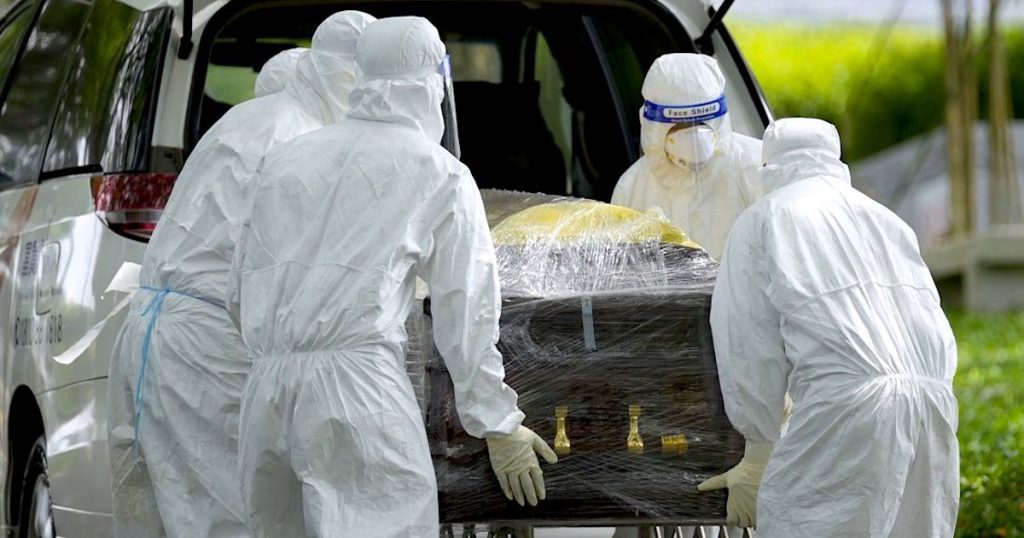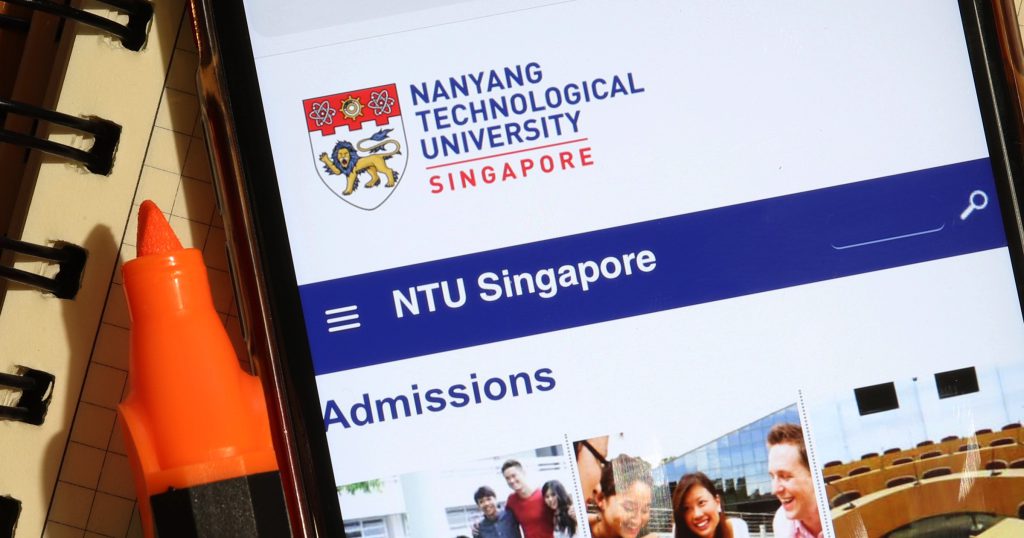The glamorous Asian city-state is typically making global headlines for all the best reasons — wealth, safety, low crime, no corruption, best business environment, world-class infrastructure, excellent healthcare and education or the world’s best harbour and airport.
For a long time, it has also been the world’s darling for its successful strategy of keeping Covid-19 at bay, with very few cases and fatalities recorded ever since the pandemic began last year.
These days, however, in a rare exception to this rule, the media around the world have focused on how the city-state is seemingly buckling under the brunt of the virus, just as it has tried to open up its economy and borders a bit more, having vaccinated over 80 per cent of its society (or close to 95 per cent of vaccine-eligible population).
But is it?
Let the numbers speak
Following the media headlines, online comments and certain political opportunists, you might be thinking that the diminutive island indeed cracked and is only now feeling the long overdue burden of the pandemic — which is surely going to erase its achievements, bringing it level with the rest of the world.
In reality, however, the biggest challenge in pandemic response isn’t even tackling virus itself but the perception of it, often amplified by poor grasp of basic math blended with fake news seeping in from abroad, misleading the public into believing things that are simply not true.
Isaac Newton said that the “truth is ever to be found in simplicity” and in this spirit, I would like to recommend everyone to make their own opinion on the basis of these most basic statistical figures which show how bad — or good — the situation in Singapore is.
Singapore’s place in the world
Despite what seems like a massive outbreak in the city, Singapore remains among the least affected countries in the world. Current number of deaths in proportion to population (i.e. the number of fatalities per 1 million inhabitants) stands at just 56.
This is over 100 times less than the worst affected country in the world — Peru — and around 40 to 50 times less than developed Western nations like USA, Belgium, Italy or UK. Even disciplined Germany or Switzerland recorded more than 1,000.

Hong Kong — that Singaporeans like to compare their city with — sits at 28, but it has been pretty much sealed off from the world and is following Chinese protocols. It also has to grapple with considerably higher vaccine hesitancy, which prevents it from reopening the borders, what would most certainly lead to an explosion of the virus in the relatively poorly inoculated metropolis.
The best performer is New Zealand, with just five deaths per 1 million people, but it too lingers in isolation, at the literal end of the world. Should it open up more boldly, it would suffer the same — or worse — fate, considering barely 60 per cent of its population is vaccinated (versus 84 per cent in Singapore, including 94 per cent of those over the age of 12).
In other words, the only places doing better than Singapore are those which have yet to even try reopening their borders, encouraging more inward and outward travel. And they too will not escape a rise in recorded cases and deaths when they unfreeze. No country can remain completely insulated forever.
The daily number of cases is no longer relevant as we already understand that the virus is unlikely to ever be extinguished. But with the help of modern medicine, we can neuter it to the point of it becoming another mild cold.
COVID-19’s place among the viruses
Speaking of viruses and knowing how Singapore does against Covid, let’s talk about its severity. Of course, hearing that, every day, a few or a dozen people meet their end because of the virus is greatly upsetting.
But in reality, we still have to be able to compare it to other illnesses we know, like common flu.
In an average year, seasonal flu is killing approximately 800 people in Singapore — a vast majority of whom share a similar profile with COVID-19 victims: underlying illnesses, weakened immunity, old age and so on.
Over a comparable 20-month period (since the pandemic started around February/March of 2020), flu would have killed approximately 1,300 people — and this has been happening for time immemorial.
Within the same period of time, COVID-19 has killed 329.

Of course, this is not to say that COVID-19 is a weaker or less dangerous virus. It had the potential to kill anywhere between 5,000 and 15,000 people (going by the numbers reported elsewhere).
Singapore’s very low figures have been achieved through national isolation, various restrictions on public activities, social distancing, work from home, contact tracing and so on. It has come at a considerable economic and social cost.
Nevertheless, while we mourn the dead, we have to remember that it was possible to limit the impact of the disease to far below what a common flu would have caused without anybody even noticing. It’s a tremendous success.
However, herein lies another problem. Thousands of Singaporeans have been lulled into complacency, believing that no harm can come to them. Unfortunately, this has led to the creation of one last tiny, but very dangerous, gap in pandemic response: vaccine hesitancy.
The biggest killer is not the virus
Despite boasting some of the highest vaccination rates in the world, Singapore still has to grapple with a relatively small — but large enough to be a problem — group of people who refuse to get the jab.
Comfort of living in a country which has so enormously outperformed every other in the world was certainly a contributing factor, as the fear that gripped people last spring — prompting thousands to clean out the shelves, stocking up on toilet paper and face masks — has disappeared.
Singapore was so successful that thousands stopped caring about the virus.
Out of 5.5 million people, 500,000 children below the age of 12 are ineligible to receive the vaccine yet. But while they may be carriers of the virus, they are exceedingly unlikely to end up in hospital or suffer serious adverse effects. Among those over the age of 12, 94 per cent have already received their vaccines.
Nevertheless, the remaining six per cent translates to a whopping 300,000 people — still an enormous group, which is highly vulnerable to COVID-19.
As the local government is reporting detailed figures daily, many mistook the presence of vaccinated individuals among the dead or severe ICU cases for evidence that vaccines are not working. In reality, it is quite the opposite.
What matters are the proportions which show enormous overrepresentation of the unvaccinated among the dead.

According to the Ministry of Health (MOH), individuals from among the six per cent of those who are partially or completely unvaccinated comprised 67.5 per cent of deaths in the first three weeks of October.
If vaccines did not work, we would expect the proportions to be the same in both charts — six per cent unvaccinated, six per cent dead.
But given the huge overrepresentation of the unvaccinated, we can estimate the risk of dying is over 11 times higher among them (MOH reported exactly 11.7 times) than among the vaccinated.
What’s really sad is that out of 169 deaths reported in that period, 30 were of those who received one dose of the vaccine. This suggests that they got scared some time before they contracted the disease and went to receive their shot, but did not survive long enough to complete the two-dose cycle and develop necessary immunity.
Fake news circulating over WhatsApp, conspiracy theories peddled on the internet and various strains of vaccine-skepticism — sometimes used for political reasons (even in Singapore) — are responsible for most of these deaths.
Instead of 200 to 300 fatalities recorded in the past three months, there could only have been as few as 20 or 30. The remaining victims were not killed by the virus, but by lies and misinformation of fools and crooks.
Last year, we were all forced into hiding and isolation, because we had no means of dealing with the disease — but today, we do.
Singapore has long had more than enough doses to have everybody vaccinated. It now has enough doses to roll out the booster campaign.
Aside from rare cases of underlying medical conditions, there are no reasons why nearly 300,000 people should not be vaccinated. But because of lies and ignorance they now have to race against time and the disease, because it takes two months to achieve maximum protection.
The virus is no longer our biggest problem, other humans are. And those deaths are on them, not COVID-19.
Get $20 off your order on VP Label when you checkout with Pace and the code PACEVP20 (min spend $80). Discover and shop exciting homegrown brands now:
Featured Image Credit: AP











